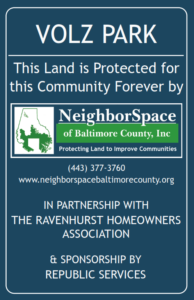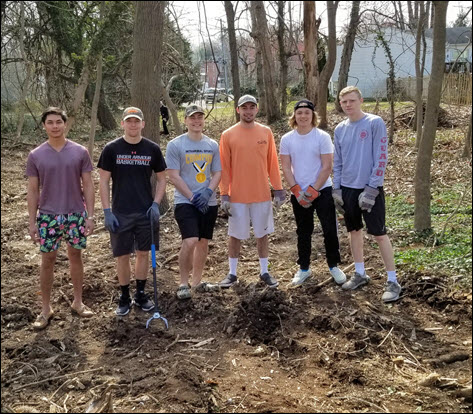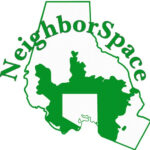Among the many heartening recommendations contained in County Executive Olszewski’s Transition Report were two having to do with “increasing engagement with nonprofits …” and “establishing a Grants Coordinator in the Executive’s Office to seek resources in coordination with County departments and nonprofit partners ….” They are a recognition that the state of nonprofit activity in the County is not robust.

With the addition of a new staff member in the person of Patrick Filbert, NeighborSpace has been able to begin to do the kinds of things that Crutchfield and Grant suggest are fundamental to nonprofit impact. Let me explain.
-
Making Markets Work

Among the best practices is “making markets work,” i.e., seeing business as a powerful partner. NeighborSpace is replacing old signs and installing new ones systematically across 20 different sites. Some locations require more than one sign and, to ensure their longevity, the specifications call for the use of material that will withstand harsh weather and vandalism. The point is that each one costs over $500 to manufacture and install, making the total cost of the project a sizeable one.
To allay these costs, NeighborSpace has approached several businesses as signage partners. Most recently, Republic Services stepped up to cover the cost of signage at Volz Park, an evolving trail project in Middle River. Republic Services is also donating a dumpster for an April 27 clean up at a site on Beech Avenue in Overlea. (You can learn more about this and other opportunities to volunteer on the Events Page of the new NeighborSpace website).
-
Inspiring Evangelists
Another best practice advocated by Crutchfield and Grant is to “inspire evangelists,” i.e., engage diverse stakeholders and connect them to your larger mission. Patrick Filbert, the NeighborSpace Program Manager, has drawn on the experience he had with fraternal organizations in college to get local sororities and fraternities to participate in clean-ups on our lands this spring. Men from the Alpha Sigma fraternity at Towson University, shown below, were out to help staff and NeighborSpace Board Members with a cleanup at Beech Ave on March 30 and they’re returning on April 27.

Middle school students from the Bridges Program, shown below, participated in another Beech Ave. cleanup on April 6. The students learned about invasive species and how to properly remove ivy from trees. Bridges is a 13-year program of the St. Paul’s and Gilman schools that supports the long-term success of 272 Baltimore City youth through various summer and school-year programs designed to help them get to and through college and into a promising career. You can learn more about Bridges here.
-
Building and Nurturing Nonprofit Networks
The final practice from Forces for Good that I want to mention here is “Building and Nurturing Nonprofit Networks, ” i.e., seeing other nonprofits in your area as allies rather than competitors for a limited pool of philanthropic dollars and seeking to create a strong network that can achieve high impact. (It’s the reason we have always advertised other nonprofits’ events in our newsletter). On April 13, NeighborSpace worked with the Gunpowder Valley Conservancy on a project to remove invasives and plant native species on a five-acre parcel that NeighborSpace owns in the Cottages at Norman Creek community in Essex. The work, which involved the local homeowner’s association and volunteers from the community, was supported by a grant from the Chesapeake Bay Trust. On May 4, NeighborSpace and the GVC will team up again to plant trees on land that is subject to a NeighborSpace conservation easement on Dulaney Valley Rd.
In a similar vein, NeighborSpace contracted with Blue Water Baltimore to install the signs alluded to above. That organization has a construction arm, something NeighborSpace lacks, and a very smart goal of trying to do more work “upstream,” making it a terrific partner for NeighborSpace.
Finally, NeighborSpace is a founding member of the Baltimore County Green Alliance, which held its inaugural meeting on April 11. While the members, shown below, are still chewing on the precise wording of the BCGA’s mission, its essence is all about collaborating where possible on advocacy, educating the public on environmental issues, and serving as a trusted source of information for elected and appointed officials.
Thank you for the privilege of your time and for your interest in this important topic. If you found it of helpful, would you use the share buttons below to pass it on?
